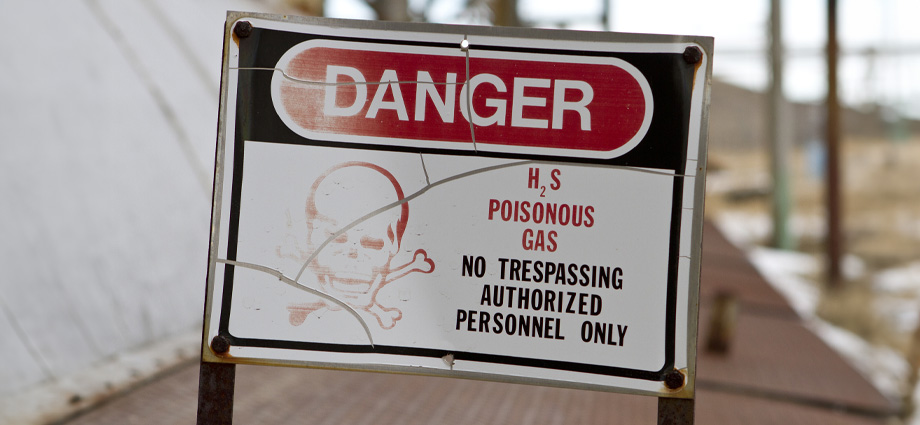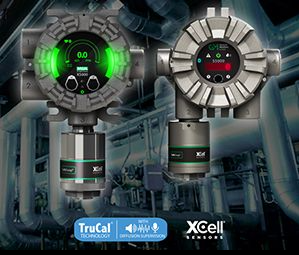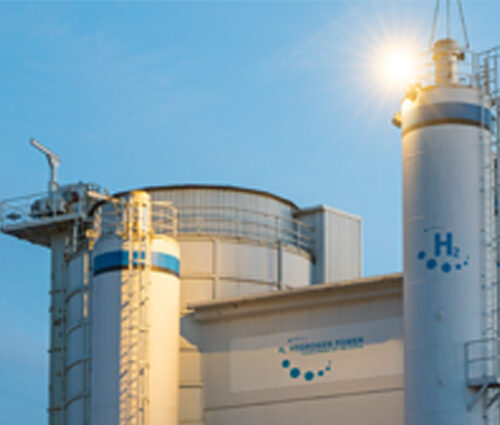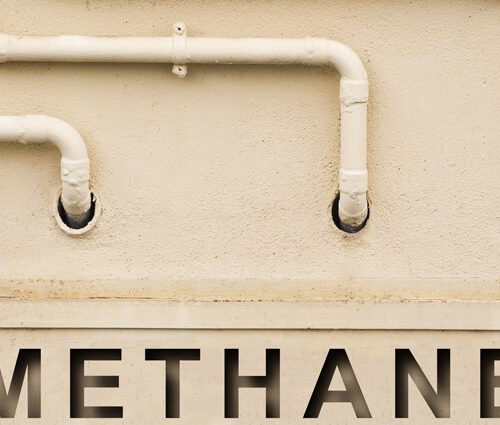
Hydrogen sulfide (H2S) gas is not just a foul-smelling nuisance; it’s a silent killer lurking in various industrial environments, wastewater treatment plants, and oil refineries. Its toxic nature, even at low concentrations, poses severe risks to human health and the environment. Understanding the dangers of hydrogen sulfide gas releases, including its toxicity levels, and implementing preventive measures such as gas detectors are critical steps in helping to ensure safety and mitigate potential disasters.
The Toxicity of Hydrogen Sulfide Gas
Hydrogen sulfide is a colorless, flammable gas with a distinctive rotten egg odor. However, relying solely on its smell for detection is risky, as the human nose can quickly become desensitized to the odor, especially in prolonged exposure. What makes hydrogen sulfide particularly hazardous is its toxicity levels. Even at low concentrations, exposure to this gas can lead to a range of health issues, from irritation of the eyes and respiratory system to more severe effects such as headaches, nausea, unconsciousness, and even loss of life.
The Occupational Safety and Health Administration (OSHA) has set permissible exposure limits (PELs) for hydrogen sulfide gas. The short-term exposure limit (STEL) is 15 parts per million (ppm), averaged over a 15-minute period, while the permissible exposure limit (PEL) is 10 ppm over an 8-hour work shift. Exceeding these limits can result in immediate health hazards and long-term health complications for exposed individuals.
Strategies to Help Prevent H2S Gas Releases Utilizing Gas Detectors
Given the serious health risks associated with hydrogen sulfide gas, proactive measures should be taken to prevent its release into the environment. Gas detectors can play a crucial role in the early detection and mitigation of hydrogen sulfide gas leaks, helping to safeguard lives and environments.
Gas detectors come in various types, including fixed, portable, and personal monitors, offering flexibility in different operational environments. Fixed gas detectors are strategically installed throughout industrial facilities, providing continuous monitoring and early warning of gas leaks. Portable and personal gas detectors offer on-the-go detection capabilities, ideal for fieldwork or confined space entry, ensuring individual workers are protected from harmful exposure.
Benefits of Gas Detectors:
- Early Detection: Gas detectors can identify the presence of hydrogen sulfide gas even at low concentrations, allowing for early intervention before levels become hazardous.
- Continuous Monitoring: Fixed gas detectors provide round-the-clock monitoring, ensuring a proactive approach to gas leak detection and prevention.
- Worker Safety: Portable and personal gas detectors offer individual workers real-time alerts to protect them from harmful exposure, mitigating the risk of immediate health hazards.
- Regulatory Compliance: Utilizing gas detectors helps industrial facilities comply with safety regulations and standards, reducing the risk of accidents and potential legal liabilities associated with exceeding permissible exposure limits.
MSA’s Gas Detection Solutions for H2S Gas Leaks
MSA is at the forefront of hydrogen sulfide (H2S) gas detection solutions, pioneering the integration of diverse sensing technologies to offer a comprehensive approach.
Electrochemical Sensors the most common technology used to detect H2S gas leaks. MSA has improved on conventional sensor designs with our innovative XCell® TruCal® sensors. TruCal offers automated calibration verification, ensuring the integrity of the sensor and the accuracy of gas detection readings. This feature helps reduce the need for manual calibration checks, streamlines maintenance procedures, and minimizes downtime. You can learn more about TruCal here.
Open Path (line-of-sight) Gas Detectors more commonly used to measure gas leaks over wide areas, our Senscient ELDS open path gas detector is target gas specific to H2S and is not affected by interferent gases, has no consumable parts, and doesn’t require frequent manual gas checks saving valuable time and resources. Learn more about Senscient ELDS detectors.
Ultrasonic Gas Leak Detectors Pressurized hydrogen sulfide leaks can be detected using our Observer-I ultrasonic gas leak detector. This sensing technology “listens” for escaping gas and is unaffected by wind or plume direction making it ideal for monitoring in outdoor environments.
Conclusion:
Hydrogen sulfide gas releases pose significant risks to human health and the environment, emphasizing the importance of proactive prevention measures. Gas detectors, with their ability to detect even low concentrations of hydrogen sulfide gas, are indispensable tools in mitigating these risks and ensuring safety in industrial settings.
By investing in robust gas detection systems and adhering to safety protocols, industrial facilities can minimize the threat of H2S gas releases, creating safer working environments for all. Remember, when it comes to hydrogen sulfide gas, detection is key to prevention, and the toxicity levels underscore the urgency of implementing effective gas detection strategies.

Download TruCal Self-Calibrating Technology White Paper
Download the Whitepaper






